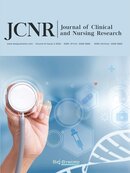Abstract
Objective: To observe the effect of CAGE regimen in the treatment of adult refractory acute non-lymphocytic leukemia. Methods: In this experiment, 86 adult patients with refractory acute non-lymphocytic leukemia who were treated between January 2018 and January 2022 were selected as experimental subjects and were divided into two groups, the observation group and the control group, according to different treatment methods, with 43 patients in each group. The observation group was treated with the CAGE regimen, whereas the control group was treated with conventional therapy. The disease remission rate and incidence of adverse reactions were observed. Results: The comparison of disease remission rates between the two groups showed that there was no significant difference in the results of the first course of treatment and the second course of treatment between the two groups (P > 0.05), but the incidence of adverse reactions in the observation group was lower than that in the control group (P < 0.05). Conclusion: The CAGE regimen has a significant therapeutic effect in the treatment of adult refractory acute non-lymphocytic leukemia. It improves the treatment advantage of patients during the treatment process, thus alleviating the condition of patients and improving their quality of life.
References
Lu S, Yao J, Li S, et al., 2021, Two Cases of Acute Non-Lymphocytic Leukemia with PICALM-MLLT10 and Literature Review. Chongqing Medicine, 50(19): 3369–3374.
Gao W, Jiang M, Gao L, et al., 2021, Analysis of Factors Related to Treatment Failure of Acute Lymphoblastic Leukemia in Children. Chinese Journal of Experimental Hematology, 29(03): 661–668.
Bai D, Bai Y, Tian F, 2021, Expression and Significance of Long Non-Coding RNA Homeobox Gene A11 Antisense RNA in the Bone Marrow of Children with Acute Lymphoblastic Leukemia. Cancer Progress, 19(20): 2087–2090.
Cao X, Wei Z, Liu D, et al., 2021, Comparison of the Efficacy of Haplotype and Sibling Hematopoietic Stem Cell Transplantation in the Treatment of Acute T-Lymphoblastic Leukemia in Complete Remission. Chinese Journal of Hematology, 42(03): 210–216.
Cao X, Qiu L, Zhang J, et al., 2021, Clinical Analysis of 41 Cases of Relapsed Acute B Lymphocytic Leukemia After CART Sequential Secondary Allogeneic Hematopoietic Stem Cell Transplantation. Chinese Journal of Hematology, 42(04): 318–323.
Zhang L, 2021, Changes of Peripheral Blood T Lymphocyte Subsets in Acute Myeloid Leukemia and Its Clinical Significance. Capital Food and Medicine, 28(17): 20–21.
Wang D, Ding Y, Zhou G, et al., 2021, Expression and Clinical Significance of Programmed Death Molecule 1/Programmed Death-Ligand 1 in Childhood Acute Lymphoblastic Leukemia. Chinese Journal of Practical Pediatrics, 36(07): 525–528.
Wang X, Chang Y, Liu Y, et al., 2021, Comparison of the Prognostic Significance of Minimal Residual Disease in Patients with PH-Positive Acute B Lymphoblastic Leukemia Before Allogeneic Hematopoietic Stem Cell Transplantation by Multiparameter Flow Cytometry and Real-Time PCR. Chin J Hematology, 42(02): 116–123.
Wang Z, Li S, Sun Y, et al., 2021, Positive Minimal Residual Disease Indicates Poor Prognosis of Acute Lymphoblastic Leukemia Patients with Complete Remission 2 or Above Before Allogeneic Transplantation. Chinese Journal of Laboratory Medicine, 44(12): 1145–1152.
Peng Q, Zhu C, Liu G, et al., 2021, Study on the Expression Significance of QKI, OCT4 and Bcl-2 mRNA in Children with Acute Lymphoblastic Leukemia. Chinese Journal of Cancer Prevention and Treatment, 28(15): 1151–1156.
Li L, Wang M, Song Y, et al., 2021, Application Value of ALL Multi-Probe System in the Diagnosis and Treatment of Childhood Acute Lymphoblastic Leukemia. Experimental and Laboratory Medicine, 39(02): 374–376.
Zhang X, Wang L, Tang B, et al., 2020, Pretreatment of Unrelated Umbilical Cord Blood Transplantation Without Antithymocyte Globulin for the Treatment of Acute Myeloid Leukemia and Acute Lymphoblastic Leukemia: Follow-Up Evaluation of 306 Cases. Chinese Journal of Tissue Engineering Research, 24(31): 4986–4993.
Tang W, 2020, Analysis of the Relationship Between Adverse Reactions and Plasma Concentrations of High-Dose Methotrexate in the Treatment of Childhood Acute Lymphoblastic Leukemia. China Prescription Drugs, 18(12): 70–71.
Lv M, Jiang E, He Y, et al., 2020, Comparison of the Efficacy of Autologous and Sibling Hematopoietic Stem Cell Transplantation in the Treatment of Ph+ Acute Lymphoblastic Leukemia. Chinese Journal of Hematology, 41(05): 373–378.
Feng J, Zhang L, Cao X, et al., 2020, Treatment of Ph-Chromosome-Negative Adolescents and Young Adults with Acute Lymphoblastic Leukemia with a Similar Regimen for Children: A Single-Center Retrospective Study. Chinese Journal of Hematology, 41(05): 399–404.
